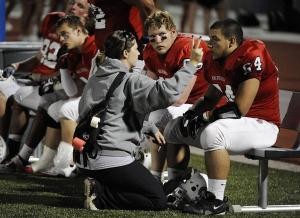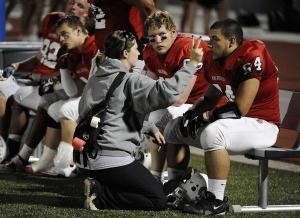If you are struggling with lower back pain that radiates down your leg, you might have hit the internet searching for answers, only to find the terms “sciatica” and “herniated disc” discussed frequently. This is because both conditions can cause debilitating back...
You open your eyes, stretch, and sit up, ready to start the day. But the moment your feet hit the floor, a sharp or aching pain shoots through your heels, arches, or the balls of your feet. Morning should feel refreshing, yet instead, you find yourself hobbling to the...
Are you a fitness enthusiast or a dedicated athlete who has suddenly been sidelined by a nagging, persistent pain in your calf and ankle? That sharp or aching sensation that flares up during or after activity could be the result of Achilles tendonitis. The Achilles...
Three Ways to Reduce Your Child’s Risk of Sports Injury

Sports are wonderful activities for children to get involved in, but you want them to have fun and not worry about possible injuries. Getting involved in sports is a great way to learn discipline, responsibility, and teamwork. It’s also a great way to stay healthy by reducing their risk of developing a chronic illness such as diabetes, obesity, cancer, or cardiovascular diseases. While the risks may be low, it’s still very important to take every precaution and keep them protected from possible injuries.
When children suffer an injury, it can be more difficult for them to recover because their bodies are still developing. If a doctor reconstructs a torn ligament or treats a broken bone, sometimes deformities form that lead to problems in the future. Treatment is important, however, because ignoring an injury could lead to arthritis or other issues later in life.
The best way for a child to avoid a difficult recovery from an injury is to not have one at all. You can reduce your child’s risk of sports injury by taking a few simple precautions.
Wear Protective Gear
Wearing protective gear is one of the most important steps you can take to reduce your child’s risk of suffering a sports injury. Helmets protect your child’s skull as he or she participates in football, hockey, baseball, biking, or skating. Helmets differ from sport to sport, so be sure that you’re using the correct helmet and that it fits properly. If it’s too tight or too loose on the child’s head, it won’t provide the necessary protection. The helmet should be snug, but not so tight that it’s uncomfortable. To ensure the proper fit, always fasten the strap if it has one when you’re trying it on.
In addition to helmets, you’ll need other pads and guards to provide protection for various parts of the body based on the sport they play. Various types of protective gear include wrist, elbow, knee, and shin guards, eye protection, mouth guards, and a protective cup for boys. Check with the coach before practice begins to find out what kind of padding is required.
Teach the Proper Technique
Part of the reason children get hurt so often during sporting activities is because they are inexperienced and haven’t learned the proper techniques. Children will be less likely to get hurt when they are taught, and when they use, correct techniques during sports. Proper form should always be used during activities like making tackles in football, kicking a soccer ball, and exercising in general, just to name a few.
Know the Rules of the Game
When children understand the rules of the game, they will be more aware of the other players on the field. Hopefully, your child will be safer when they pay attention and are better able to anticipate what another player’s next move will be.
Getting children involved in sports is a great way to have fun, stay healthy and in shape, and teach them about discipline and teamwork. Keep these tips in mind before sending them out onto the field so they will have the best chance of avoiding a sports injury.


